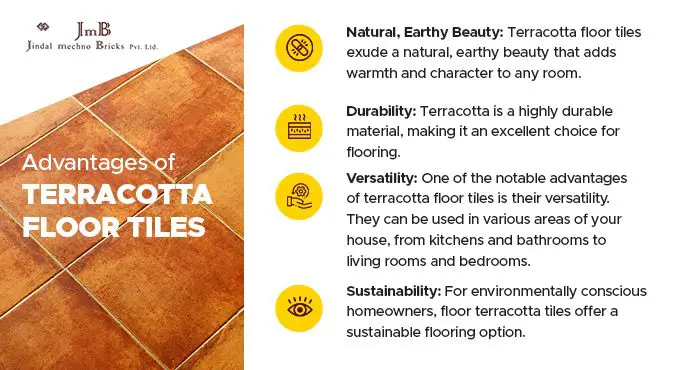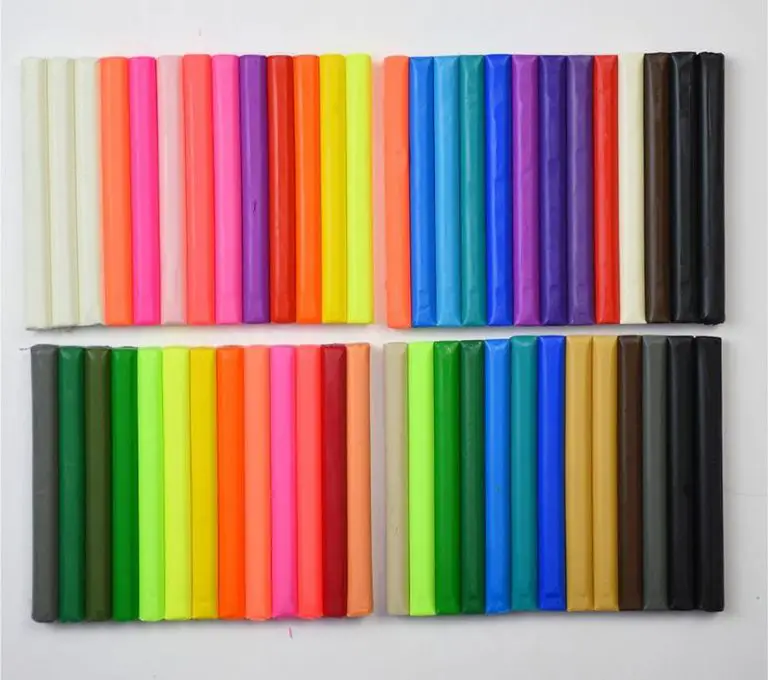Does Air Dry Foam Clay Crack?
What is Air Dry Clay?
Air dry clay, also known as self hardening clay, is a type of clay that dries and hardens at room temperature without needing to be baked in a kiln. Unlike polymer clay that chemically cures, air dry clay hardens through the evaporation of the water it contains.
The main ingredients in air dry clay are water and natural clays such as kaolin, bentonite or powdered clay. It may also contain small amounts of additives such as glycerin, oils, and antioxidants to aid in flexibility and workability.
Air dry clay works by having the water content evaporate over time when exposed to air. As the water evaporates, the clay particles bond together increasing the hardness. The time it takes to fully cure depends on factors like thickness and ambient humidity, but usually takes 1-3 days.
Some pros of air dry clay compared to other clays are that it is inexpensive, versatile, and accessible to hobbyists. It does not require baking. The cons are that pieces are more fragile than baked polymer clay and can shrink and potentially crack during drying if not properly handled.
Overall, air dry clay is an approachable sculpting medium suitable for crafters and artists of all skill levels. Its air drying properties allow easy creation of decorative objects without the need for an oven or kiln. https://pediaa.com/what-is-the-difference-between-polymer-and-air-dry-clay/
Does Air Dry Clay Crack While Drying?
Air dry clay can crack while drying due to a variety of factors. As clay dries, it goes through different moisture stages that cause the clay to shrink and contract. If the clay dries too quickly or unevenly, this can lead to cracks and fissures.
Certain types of clay are also more prone to cracking than others. Polymer clays like Sculpey and Fimo are flexible even when dry, reducing cracking. Air dry clays with lots of natural clay minerals like Crayola Air Dry Clay can crack more as the clay particles contract (Source).
There are several tips to prevent air dry clay from cracking while drying:
- Dry clay slowly and evenly to prevent moisture stress cracks
- Store unused clay in air-tight bags or containers
- Avoid clay pieces that are too thick or uneven in thickness
- Mix in plasticizers like glycerin to increase clay flexibility
- Reinforce weak areas with tightly rolled coils of clay
With proper care while sculpting and drying, air dry clay can produce crack-free pieces. Monitoring moisture levels and drying conditions is key.
Wet Clay Stages and Cracking
Air dry clay goes through several stages as it dries, each of which can lead to cracking in different ways:
The wet stage is when the clay is still very moist and malleable. At this point, handling the clay excessively or shaping it too thinly can cause cracking. Air bubbles incorporated into the clay while kneading can also expand and crack the surface as it dries, according to this Reddit user.
During the leather-hard stage, the clay has dried somewhat but is still slightly flexible. At this point, the clay can crack if bent or stretched too far. Letting the clay dry slowly and evenly prevents excessive cracking in the leather-hard stage.

In the dry stage, the clay has hardened fully and is rigid. Fast drying can cause the outer layers to shrink and pull away from inner clay that is still drying, resulting in cracks on the surface, as explained by this article.
Understanding how air dry clay dries and where cracking occurs allows you to take steps to prevent it at each stage.
Clay Brand Differences
When working with air dry clay, the specific brand you choose can make a difference in its tendency to crack while drying. Some of the leading air dry clay brands to compare include:
Crayola Air Dry Clay – Crayola is a popular choice for beginning clay artists and kids. It dries to a strong, lightweight finish and has a low cracking tendency if stored properly. However, it may crack more than other brands if allowed to dry out [1].
Model Magic – This brand by Crayola comes in a variety of colors and dries lightweight and hard. It resists cracking, although very thin and intricate shapes may become fragile [2].
DAS Air Dry Clay – Considered a high-quality clay, DAS dries strong and durable with very little cracking. It’s a good choice for detailed sculptures and jewelry pieces [1].
Sargent Art – Available in white and terracotta, this budget-friendly brand dries hard and durable. It resists cracking better than many clays. The terracotta may need extra sealing [1].
Test different brands and compare their finished hardness, durability, and cracking tendencies when dried to pick the best option for your projects.
Clay Additives to Reduce Cracking
Adding certain ingredients to air dry clay can help strengthen it and reduce cracking as it dries. Two of the most commonly used additives are PVA glue and cornstarch.
PVA glue, also known as white glue, acts as a plasticizer when added to clay. This helps make the clay more flexible and less prone to cracking. To use PVA glue, mix in anywhere from 10-50% glue into the clay, depending on how flexible you want the clay to be. Adding too much glue can make the clay sticky and hard to work with. According to one source, “adding white glue to any air-dry clay brand will make it more flexible and less prone to breakage” https://www.delineateyourdwelling.com/7-ways-to-keep-air-dry-clay-from-cracking/
Cornstarch is another common additive that can bulk up air dry clay to help prevent cracking. Mix in 1-2 tablespoons of cornstarch per 1 cup of clay. The cornstarch particles get in between the clay particles and provide more structural support as the clay dries. One tip is to add a bit more cornstarch to areas of a sculpture that will be thinner or protruding.
Proper Clay Storage
Proper storage of unfinished clay pieces is crucial to prevent cracking and premature drying. Air dry clay contains water, so it needs to be stored in an airtight container to retain moisture. Exposing clay to air causes the water to evaporate, making the clay dry out and become brittle.
According to Delineate Your Dwelling, air dry clay should be stored in a sealed plastic bag or airtight plastic container. Make sure to press out any excess air before sealing the container. Storing clay in the refrigerator can help extend its shelf life by slowing down the drying process. Let refrigerated clay come to room temperature before using to prevent condensation.
For larger unfinished clay projects that won’t fit in a bag or container, Gathering Beauty recommends covering the piece with plastic wrap or a lightly dampened cloth. You can also use a clay misting bottle to gently moisten the surface to prevent drying out. Just be careful not to oversaturate the clay.
With proper airtight storage and moisture retention, an unfinished clay piece can last for weeks or months before use without cracking or drying out prematurely.
Clay Sculpture Cracking Repairs
There are several techniques you can use to repair cracks in air dry clay sculptures after they have already dried and hardened:
One method is to mix a small amount of liquid clay or clay softener into a paste and work it into the cracks with a sculpting tool. Let the repair paste dry completely. Smooth out the patched areas by sanding or rubbing with a wet cloth (1).
You can also fill cracks with a paste made from baking soda and water. Force the baking soda paste into the cracked areas using a toothpick or skewer. Let it dry and then sand smooth (2).
For thicker cracks, press small strips of fresh clay into the crevices, blending the edges into the existing sculpture. Allow to fully dry before smoothing with sandpaper.
Prevent further cracking by sealing completed air dry clay pieces with a protective spray acrylic sealer. This helps lock in moisture and strengthens the outer layer.
Clay Piece Thickness and Cracking
Thinner pieces of air dry clay tend to crack more easily than thicker pieces. This is because thinner clay has less structural integrity and is more prone to drying too quickly, leading to cracks and breakage.
According to an article on Delineate Your Dwelling, thicker clay up to 1⁄4 inch dries evenly from both sides, reducing the chances of cracking. Pieces thinner than 1/8 inch are very fragile as they dry and can easily warp or break apart.
For delicate clay pieces like flowers or leaves under 1⁄4 inch, it helps to dry them pressed between two clean surfaces like glass or acrylic sheets. This keeps them flat as they dry. For thicker clay sculptures, drying more slowly and evenly is key. Storing works-in-progress in an airtight container between sessions can prevent premature drying.
In general, air dry clay should not be thinner than 1/8 inch if you want to avoid cracking. Going with thicker pieces helps the clay retain its shape and not become too brittle as it dries. Pay extra attention to drying conditions when working with thinner clay.
Source: https://www.delineateyourdwelling.com/7-ways-to-keep-air-dry-clay-from-cracking/
Baking Clay Pieces
Baking air dry clay is an effective way to further strengthen pieces and reduce cracking compared to just air drying. When baked at the proper temperature, the clay undergoes physical and chemical changes that fuse and harden it into a more durable material.
Low temperature baking between 130°F to 275°F helps drive out any remaining moisture from the center of the clay while hardening the outer layers. This more gradual drying prevents exterior cracking. Pieces can be baked for 1-2 hours depending on thickness. Let the clay cool fully before handling to prevent cracks from forming.
Higher temperature baking above 275°F vitrifies and permanently hardens the clay through melting and fusion. Temperatures of 275°F to 350°F are common. Thinner pieces may only need 15-20 mins while thicker sculpts require 1 hour or more. Remember to cool completely after baking. Vitrified clay cannot be remolded once hardened.
When baking, place the clay on a baking sheet lined with parchment paper or aluminum foil. Avoid any direct contact with the hot pan surface which can cause cracking. Small holes can be poked in very thick areas to allow heat to fully penetrate the center. With proper baking, air dry clay becomes much more crack resistant.
Sources:
https://www.susiebenes.com/blogs/airdryclayart/a-method-to-the-madness-drying-air-dry-clay-effectively
Tips for Crack-Free Clay Projects
There are several best practices you can follow to minimize cracking when working with air dry clay:
- Use the right amount of water when conditioning your clay – too much causes cracking. Aim for the clay to feel smooth but not sticky or wet.
- Avoid making thin or narrow pieces which are prone to cracking. Sculpt clay at least 1/4 inch thick.
- Let clay dry slowly, avoiding quick drying. Air dry clay cures from the outside in, so slow drying allows moisture to evaporate without cracking the outer layer.
- Score surfaces before attaching clay pieces. This helps adjoining sections stick together and move as one.
- Store unused clay in an airtight container or plastic wrap to prevent drying out.
- During drying, support sculptures with a wire armature or place on egg carton dimples to prevent sagging cracks.
- Fill cracks with watered down clay as soon as they appear, blending repairs into the surface.
Following basic clay handling guidelines, working carefully, and repairing cracks promptly will result in smooth, crack-free finished clay projects.





